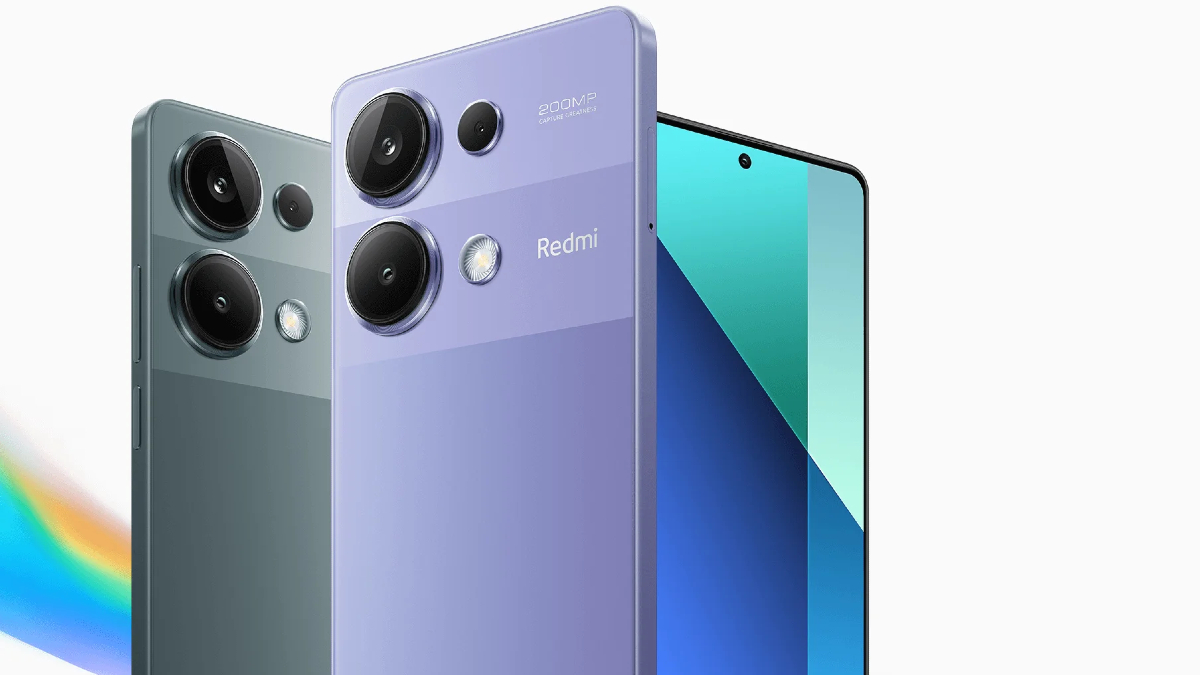Xiaomi’s strategy of flooding the midrange segment with affordable, spec-heavy devices seems to be paying off. According to Canalys, the company experienced a 32% year-over-year growth, driven largely by demand in markets such as Egypt and Nigeria, where its Redmi Note series continues to dominate the shelves. One of the latest to join the lineup is the Redmi Note 13 Pro 4G, a mid-tier entry in the new Note 13 family.
This model plays the familiar 4G card in a world shifting to 5G. Still, it offers an interesting mix of features: a large 200MP main camera, a 6.67-inch AMOLED display with 120Hz refresh rate, IP54 dust and splash resistance, and a generous 5,000mAh battery with 67W fast charging. It’s also the only “Pro” variant in the Note 13 series to keep a microSD slot.
Despite sharing much of its DNA with the Poco M6 Pro 4G, the Note 13 Pro 4G brings a sharper design, an under-display fingerprint reader, and a display that steps up from its predecessor with higher resolution and brightness. But with toned-down performance compared to its 5G sibling, the question remains—does this Pro-lite make sense for your money?
Let’s take a closer look.
Box Contents

In the box, you’ll find:
- Redmi Note 13 Pro 12GB + 256GB in Coral Purple colour
- 67W fast charger
- USB Type-C Cable
- SIM Ejector tool
- Silicon protective case
- Screen protector (Pre-installed)
- User guide
What we like about Redmi Note 13 Pro:
- Great main camera.
- Interesting-looking IP54-rated design.
- Small notch.
- Expandable MicroSD slot.
- Fast Charging.
What to consider before buying:
- No 5G connectivity.
- Does not ship with Xiaomi’s latest HyperOS.
- Video capture is limited to 1080p.
- Few software updates.
Specs at a glance: What’s different from Note 12 Pro?
| Feature | Redmi Note 12 Pro 4G | Redmi Note 13 Pro |
|---|---|---|
| Weight | 201 g | 187 g |
| Thickness | 8.1 mm | 7.98 mm |
| IP Rating | IP53 | IP54 |
| Display | 6.67″ FHD+ AMOLED, 120 Hz | 6.67″ 120 Hz AMOLED, 1.5 K resolution, 1800 nits peak |
| Chipset | Snapdragon 732G | MediaTek Helio G99 Ultra |
| Storage / RAM | Up to 8 GB + 256 GB, UFS 2.2 & microSD | Up to 12 GB + 512 GB, UFS 2.2 & microSD |
| OS | Android 11, MIUI 13 | Android 13, MIUI 14 (via OS13) |
| Main Camera | 108 MP wide + 8 MP ultrawide + 2 MP macro | 200 MP main (OIS) + 8 MP ultra + 2 MP macro |
| Selfie Camera | 16 MP | 16 MP |
| Battery | 5,000 mAh + 67 W wired | 5,100 mAh + 67 W wired |
| Connectivity | LTE, Wi‑Fi 5, BT 5.1, NFC, IR, 3.5 mm jack | 5G bands, Wi‑Fi 5, BT 5.2, NFC, 3.5 mm jack |
| Security | Side fingerprint sensor & Face Unlock | Under-screen fingerprint & Face Unlock |
| Extras | IR blaster, dual speakers | IP54 rating, Gorilla Glass Victus, Dolby Atmos |
Redmi Note 13 Pro 4G: Price in Nigeria, Kenya, India, Pakistan, Europe
The Redmi Note 13 Pro 4G is positioned as a mid-range device and is currently available across various markets at competitive pricing:
- Nigeria: Pricing varies depending on the retailer and configuration, typically ranging ₦400,000 and ₦450,000
- Kenya: The device is selling for approximately KSh 33,000 to KSh 40,000.
- India: Prices start around ₹19,000 and go up to ₹19,600, depending on the variant.
- Pakistan: Retail pricing is approximately PKR 64,600.
- Europe: €238 to €334, depending on the selected RAM and storage configuration.
Prices may vary slightly based on location, offers, and availability.
Redmi Note 13 Pro 4G: Performance
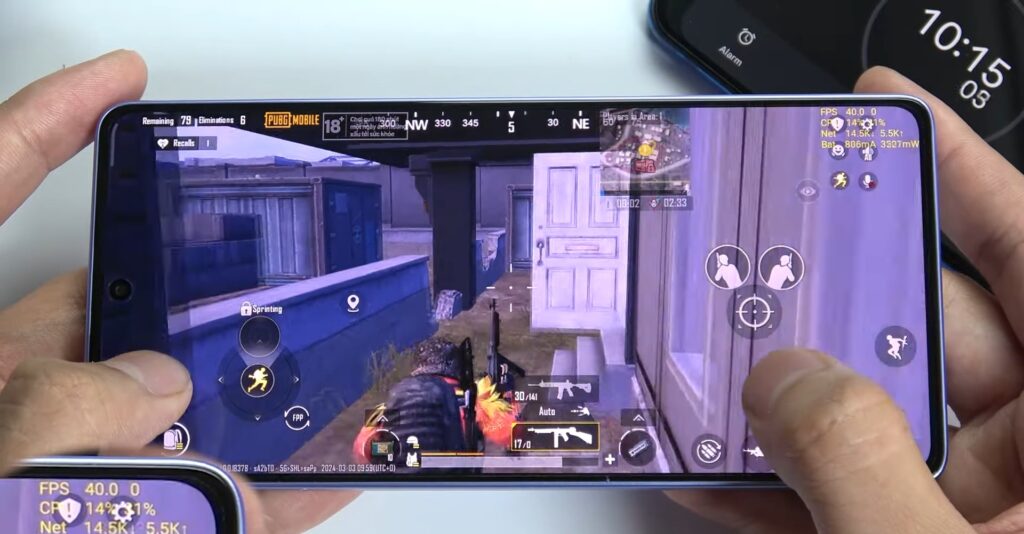
The Redmi Note 13 Pro 4G runs on the MediaTek Helio G99 Ultra chipset, a variation of the widely used G99 series built on a 6nm process. While Xiaomi markets it as “Ultra,” the actual performance improvements over standard variants remain unclear. It’s paired with either 8GB or 12GB of RAM (plus virtual RAM support) and up to 512GB of UFS 2.2 storage, expandable via microSD (using a hybrid SIM slot).
On paper, the Helio G99 Ultra sits alongside familiar mid-range chipsets like the Snapdragon 695. It handles everyday tasks well and delivers a decent experience for casual use, though it may struggle with more demanding games. The Mali-G57 MC2 GPU is suitable for moderate workloads but isn’t ideal for heavy 3D gaming.
Audio is handled by a stereo speaker setup, with Dolby Atmos support enabled by default, and the phone retains a 3.5mm headphone jack. It’s worth noting that the Redmi Note 13 Pro 4G supports only 4G/LTE networks, with dual SIM support via hybrid slots.
Xiaomi is offering a 25-month warranty alongside six months of screen protection in some markets, which may add peace of mind for budget-conscious buyers. Mostly, the device’s performance is in line with its price, particularly for non-gamers or users focused on everyday tasks.
Redmi Note 13 4G: Design and Display

The Redmi Note 13 Pro 4G shares its design DNA with the Poco M6 Pro 4G — a reminder that affordable phones don’t always get their own unique look. That said, the design holds up well. It’s a clean, symmetrical layout that doesn’t rely on a bulky camera island; instead, each lens and flash is individually raised from the back, which gives it a more polished aesthetic than some pricier siblings.
The build is solid, with flat sides and Gorilla Glass 5 protecting the front. The back panel is either matte plastic or glass (Xiaomi hasn’t specified), but the overall finish looks refined. Colour options include Forest Green, Lavender Purple, and Midnight Black. There’s also IP54 splash and dust protection, which should keep the phone safe from everyday mishaps.
The display is a 6.67-inch OLED panel with a 120Hz refresh rate and 1080p resolution, nearly identical to last year’s. Colour accuracy is impressive, covering both DCI-P3 and sRGB gamuts fully, and while peak brightness varies depending on the source, it’s rated up to 1,300 nits. The panel is flat, with thin bezels and a small punch-hole cutout for the 16MP selfie camera. Like other recent Xiaomi phones, it relies on a virtual proximity sensor, which mostly works fine.
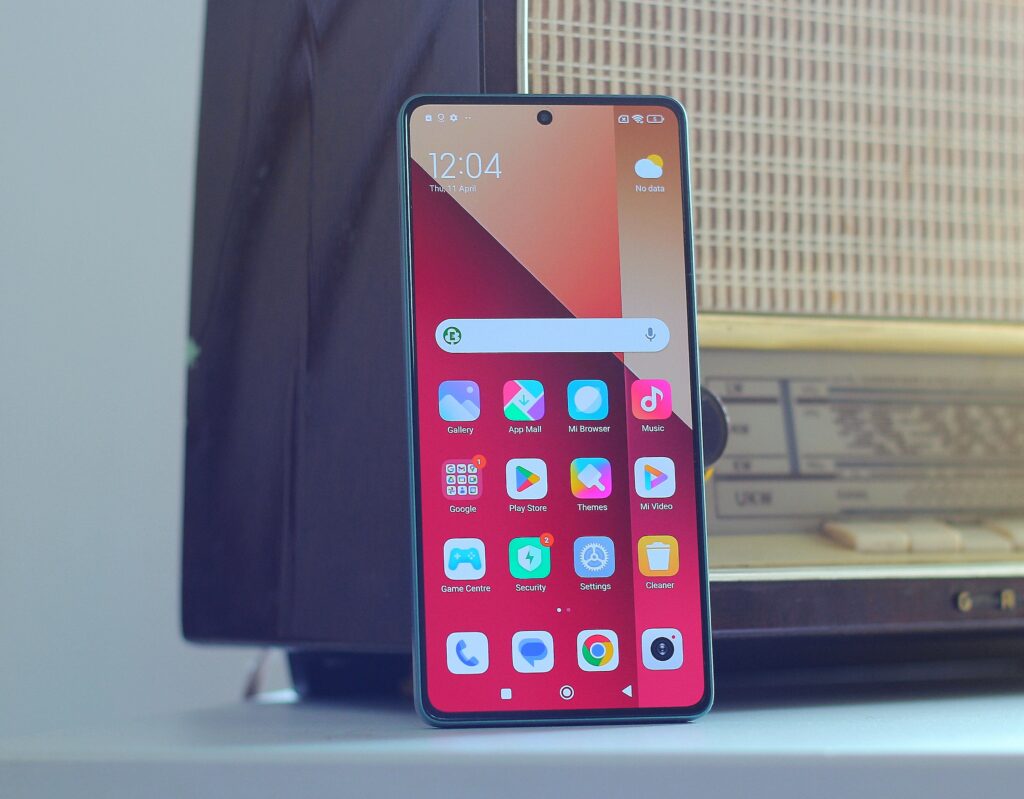
Overall, the Note 13 Pro 4G offers a familiar but well-executed design, with a capable display and IP-rated protection—not bad for a phone in its class.
Redmi Note 13 4G: Software

The Redmi Note 13 Pro 4G ships with Android 13 layered with MIUI 14, and is expected to receive an update to HyperOS in due course. While Xiaomi hasn’t officially confirmed the software support window, it’s likely to follow the same schedule as similar models, with three years of major Android updates and an extra year of security patches.
MIUI 14 brings a familiar experience with light refinements. Features like text recognition in the Gallery, enlarged home screen folders, and a more efficient Smart Devices panel stand out. Users can also uninstall most system apps and benefit from better overall system performance thanks to improved CPU and memory optimisation.
The Always-on Display is present, but limited—it only appears briefly after tapping the screen and lacks true “always-on” functionality. Notification lighting is available, although customisation options are minimal.
Multitasking tools such as floating windows and the Sidebar (which doubles as Video Toolbox in media apps) are useful additions, supporting quick actions like screen recording or casting. However, these features work best when apps are pre-whitelisted.
Privacy is managed through Xiaomi’s Security app, which offers malware protection, app permission control, data and battery management, and more. Haptics have been fine-tuned, offering responsive and crisp feedback throughout the interface.
As with many Xiaomi phones, ads may appear in some system apps, though most can be disabled manually via the app settings.
Redmi Note 13 4G: Camera
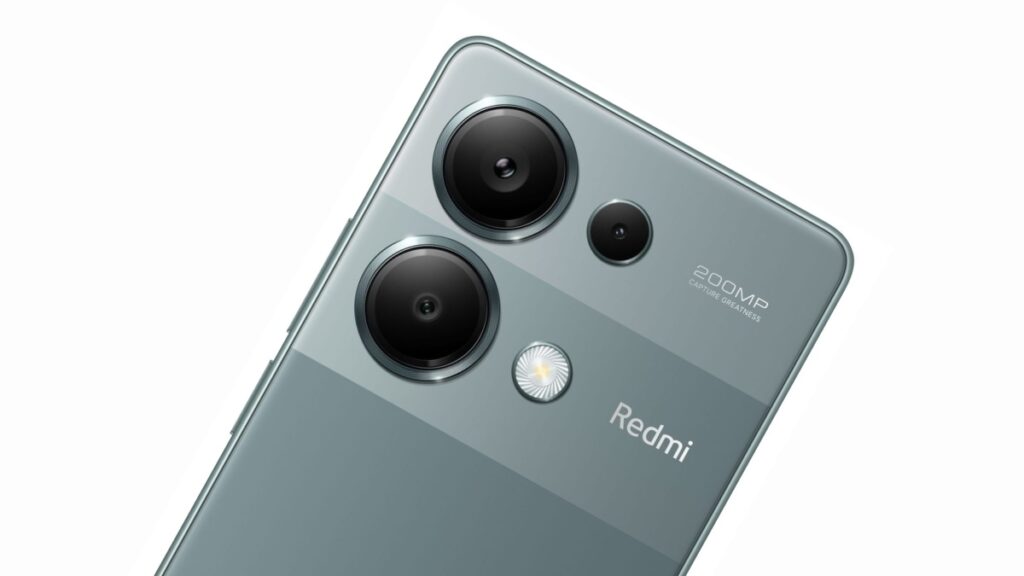
The Redmi Note 13 Pro 4G features a 200MP main camera with OIS, a notable step up from the 64MP sensor found in some other models. By default, it produces 12.5MP binned images with good colour accuracy and balanced sharpening. While fine details can appear soft when zoomed in, overall image quality is solid, and digital zoom up to 2x maintains a high level of clarity. At 4x, softness becomes more noticeable, though results remain usable.
The ultrawide 8MP camera delivers decent daylight shots with minimal noise and effective distortion correction, though edge sharpness is limited. Colours are more muted compared to the main sensor, and dynamic range is modest. The 2MP macro camera is capable of surprisingly decent results, though focus can be fiddly due to a narrow focal plane.
The 16MP front camera also has a limited focus range, which can affect sharpness at arm’s length, but produces natural colours and detailed textures in 1080p video. The main and ultrawide cameras support video recording at up to 1080p 30fps, with optional h.265 encoding. Video quality is serviceable but not outstanding, with accurate colours and modest detail. Stabilisation is present but basic, and dynamic range is limited, particularly in shadows.
Low-light photography on the main sensor is handled well, with decent detail, controlled highlights, and automatically applied night mode that improves shadow visibility. Digital zoom holds up at 2x, though 4x introduces noticeable softness. Night mode offers longer exposures with marginal improvements in detail and noise handling.
The ultrawide struggles more in low light, with soft textures, visible noise, and poor dynamic range, though night mode helps brighten darker areas. Low-light video from the main camera remains relatively clean with preserved detail and well-controlled light sources. Zoomed footage retains much of the quality, though minor noise increases at 2x.

Battery life and Charging
The Redmi Note 13 Pro 4G packs a 5,000mAh battery, on par with what you’d expect from a modern mid-range phone. Independent lab tests show solid endurance across everyday activities like video streaming, web browsing, and gaming. Charging is handled by Xiaomi’s familiar 67W wired system, with the official power adapter and high-rated cable included in the box.
According to Gsmarena, the phone reaches 42% in just 15 minutes and hits 73% by the half-hour mark. A full top-up takes roughly 49 minutes. Interestingly, that’s a touch slower than the 5G variant, despite sharing the same charging setup. Xiaomi has also included an Optimised Charging feature, which should help extend long-term battery health.
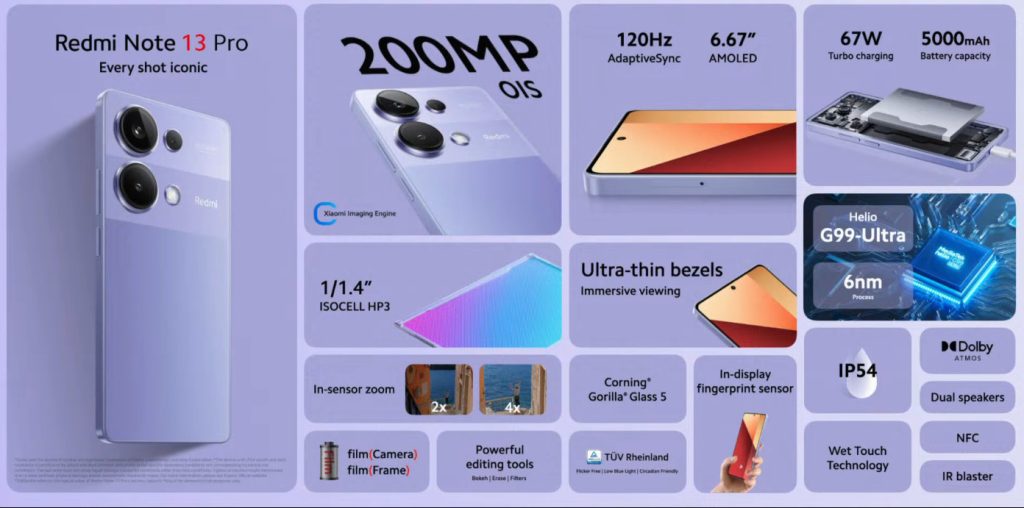
Should you buy it?
The Redmi Note 13 Pro 4G offers a well-rounded experience for its price. It’s powered by the Helio G99 Ultra, decent for everyday tasks, though limited to 4G and capped at 1080p video recording. That chipset decision might raise eyebrows in 2025, but Xiaomi clearly sees room for a 4G option at this price point, especially considering the similar Poco M6 Pro.
What works in its favour: the 120Hz AMOLED display is vibrant and bright, with smooth refresh rate handling. The 200MP main camera performs better than expected, especially when zooming in, offering more versatility than its Poco counterpart. It also holds its own with battery life and charges quickly at 67W. Extra touches like stereo speakers, an IR blaster, FM radio, and a headphone jack give it a bit more value.
That said, it launched without HyperOS, and storage uses the older UFS 2.2 standard. Priced around ₦450,000 in Nigeria, it’s not exactly cheap, but it delivers enough for those who don’t mind missing out on 5G or 4K video.
If you can stretch your budget, you might want to look at the Poco X6 Pro or Samsung Galaxy A34. Both offer 5G and more premium features at a similar or slightly higher price. But if you’re after a good camera and a rich display without breaking the ₦500K mark, the Note 13 Pro 4G is a reliable pick.
Get passive updates on African tech & startups
View and choose the stories to interact with on our WhatsApp Channel
Explore
